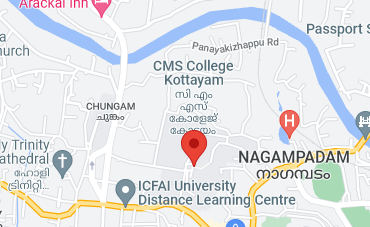History of CMS College
CMS College, Kottayam: A Peep into the Past
Now thanks be unto God, which always causeth us to triumph in Christ, and maketh manifest the fragrance of his knowledge by us in every place. For we are unto God a sweet aroma of Christ. 2 Corinthians, 2: 14-15.
Two hundred years is but a tiny drop in the unceasing flow of cosmic time. On the human scale, however, it amounts to a life span of about ten generations. That is if the first-ever graduates of the college sent their children to CMS College Kottayam, and each succeeding generation did the same, they would have their 10th generation progeny studying here at present. This is only one indication of the antiquity of CMS College Kottayam in the history of higher education not just in Kerala, but in India as a whole. Yes, CMS College, Kottayam – The College Cotym in its original orthographic avatar – was born 200 years ago, in 1817.
The pre-natal history of The College, however, goes further back to the time when Colonel John Munroe assumed charge as the Dewan of Travancore. He was not just an administrator, but a visionary and social reformer. His zeal for social change is borne out by the pivotal role he played in the abolition of slavery in Travancore in 1813. The same zeal prompted Colonel Munroe to appoint a commission to inquire into the socio-economic conditions of Syrian Christians in the province. Soon after, he appealed to the British provincial capital in Madras to initiate the process for starting a college in Kottayam. He also wrote to the Church Missionary Society, which had been established in 1799 with the avowed purpose of carrying out missionary and educational activities around the globe, requesting the society to depute highly qualified missionaries who would work as teachers in the college proposed to be set up in Kottayam. In the meantime, the British Parliament ratified a charter empowering East India Company to foray into missionary and educational work.
In the same year, i.e., in 1813, Maharani Gouri Lakshmi Bai(1810-15) of the Travancore Royal family granted 16 acres of land, 500 rupees in cash, and timber from public forests for the construction of college buildings on the banks of the Meenachil River. The construction was also supported financially by the proceeds from a deposit made by Col. Colin Macaulay, the first Resident of Travancore, for the benefit of Syrian Christians in Travancore.
In 1817, CMS Missionary, Rev. Benjamin Bailey took charge as the first Principal of The College. He laid the foundations of a modern secular education by implementing a curriculum with a strong concentration of subjects such as Syriac, Sanskrit, Latin, English, Greek, History, Mathematics, and Geography. Col. Munroe and Rev. Bailey were insistent that the academic programme at The College be no less rigorous than that at the University of Cambridge, even as the students used local materials like dried palm leaves and iron stencils instead of Western writing implements such as paper, pens, and quills. Selectae e profanis, Virgil’s Aeneid, Cicero’s Orations, Horace’s Epistles, Demosthenes, the first six books of Euclid and plane and spherical trigonometry were part of the syllabus. The college continued to get generous funding from Maharani Gouri Parvathi Bai(1815-29), and the East India Company.
The British administrators, The Travancore Royal Family, and The CMS missionaries were all convinced that education alone could lift the people of the province from injustice, ignorance, illness, and poverty that had been plaguing them for centuries. The College was their first step in this direction.
And, The College rose magnificently to the challenge and became the nucleus of a revolution in the feudal, caste-ridden society of Kerala in early 19th Century.
Realizing that the students being prepared for university examinations lagged behind in English, Mathematics, and Physics, Rev. Joseph Fenn, who succeeded Rev. Bailey as Principal in 1818, initiated a feeder programme in the form of a Grammar School. Those who graduated out of Grammar School were able to meet the challenges of The College and the University. This Grammar School later evolved into a separate entity called CMS High School. The umbilical link between The College and the High School should not be lost sight of, nor should their histories be confused in chronological terms.
Though no longer the Principal, Rev. Bailey continued his association with The College in creative ways and set up Kerala’s first printing press at The College in 1820. He designed the modern Malayalam script and adapted it for printing in his own printing machine. Later, during his visit to The College, His Royal Highness Swathi Thirunal of Travancore was so impressed by Rev. Bailey’s invention that he invited Rev. Bailey to Thiruvananthapuram and entrusted him with the task of setting up a printing press in his capital city.
The contribution of the missionary teachers of The College to the development of Malayalam went beyond the application of printing technology to the language. Rev. Richard Collins, principal of the college from 1855 to 1866, established the Department of Malayalam with a view to streamlining the teaching and learning of the native language of the students of The College. Exploiting the printing facility already available, the department published the first-ever College Magazine in South India, titled, ‘Vidya Samgraham’, meaning Anthology of Knowledge/Education in 1864. This magazine continues to be published today under the same name. In line with the best traditions of an institution of higher learning, The College inaugurated the era of scholarly publishing in Kerala. It is no surprise, therefore, that Kerala in general, and Kottayam in particular, can boast of a very high concentration of newspaper and magazine publishers, and publishers and sellers of academic books and journals.
The College has always enjoyed patronage from people belonging to different geographical areas. There are cases of students who traveled by bullock carts from distant places accompanied by their elder relatives and with provisions to cook food during the journey that sometimes took a few days. Kottayam, which was a small village with a population of only about 320, ensconced in pristine green surroundings, became a magnet that attracted knowledge seekers from far-off places. CMS College created the conditions for the transformation of this rural area into Kerala’s ‘aksharanagari’ or city of letters, and eventually the first district in India to achieve 100% literacy towards the end of 20th Century.
The College welcomed students from different religious and ethnic affiliations. The College campus thus became a crucible of community life that transcended the traditional boundaries.
Another important point not to be missed is that The College, despite offering English education, and despite being administered by English missionaries, did not produce conformists to the colonial rule. Inspired by the liberal ideas imbibed through their familiarity with western philosophers, the students of The College began questioning the continued presence of the British in India, and slogans demanding independence were raised resoundingly on The College campus.
The College, though situated geographically far from major centres of political and economic power, has always been in tune with the major social and educational trends of the times. The College is at present aided by the Government of Kerala and the U.G.C, and managed by the Church of South India. The College has full-fledge computational facilities, and the campus has been Wi-Fi-enabled for several years now. The College has been able to attract distinguished faculty members with unswerving commitment to their profession. Our students have distinguished themselves in various fields. Our present students continue the tradition of their predecessors and achieve distinction in cultural and sports activities as well as in academics. The College considers itself fortunate to have been blessed with a multitude of highly talented students both in the past and the present.
The College and the land of Kerala can legitimately claim to have arrived at a symbiotic relationship at its best. The College has been the primal fount from which flowed the strong currents of knowledge and critical intelligence that changed the scholastic and socio-cultural landscape of Kerala, and propelled the State to the forefront of social development.The Kerala society and the Kerala and Central Governments have openly asserted their pride in the achievements of The College, and affirmed their commitment to support and strengthen The College in its pursuit of excellence.
Today The College is at a historical juncture. As we look back at the two centuries we have traversed, we see many things we can justifiably be proud of. Yet, as leaders of an institution engaged in the creation and propagation of knowledge with its ever- receding frontiers, we are filled as much with trepidation as with satisfaction as we look towards the future. We simply cannot rest on our laurels.
For, what remains to be achieved is much more than what we have achieved. It is not easy to make the college courses, curriculum, and infrastructure copes with the changing demands of contemporary education and the job market. It is easy for an institution to slide into irrelevance and obsolescence unless great care is taken to stay in step with current trends. Our record till now, of course, fills us with confidence. But we are comforted more by the Word of God, which assures us that “He who began a good work in us will bring it to completion.” We know this by faith: He who called the founding fathers of The College Cotym in 1817, and has guided the college through two hundred golden years, will enable future generations of managers, teachers, and students to fulfill the mission that He, in His infinite wisdom and foresight, has mandated for CMS College, Kottayam.
About
CMS College

